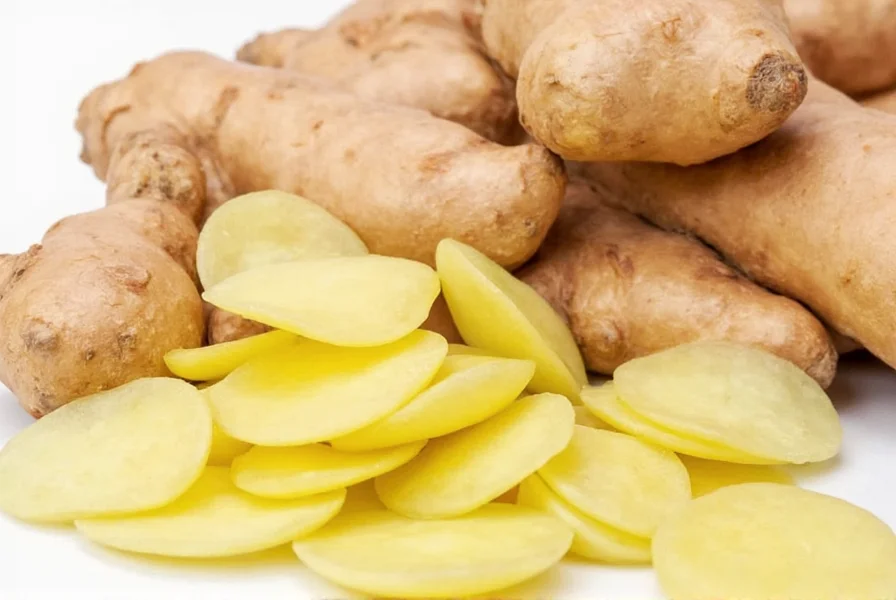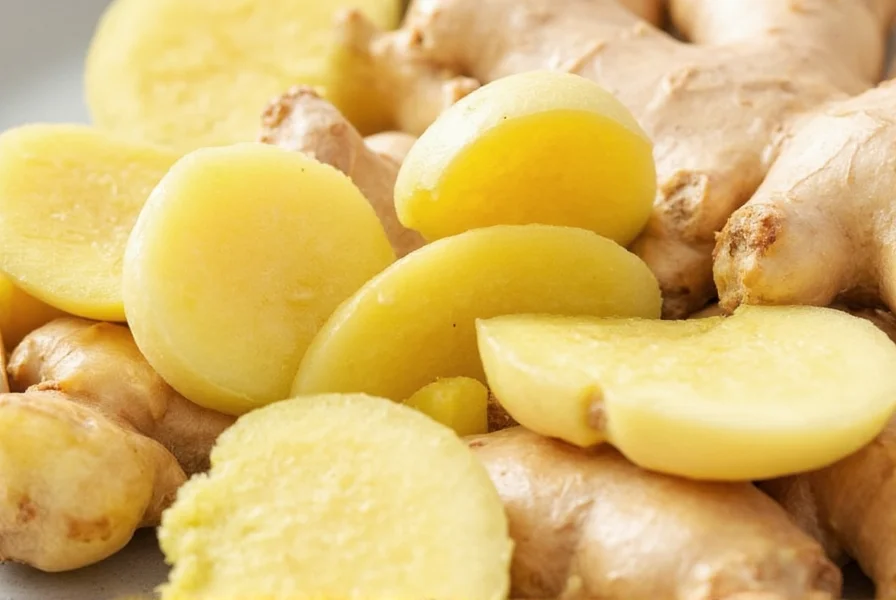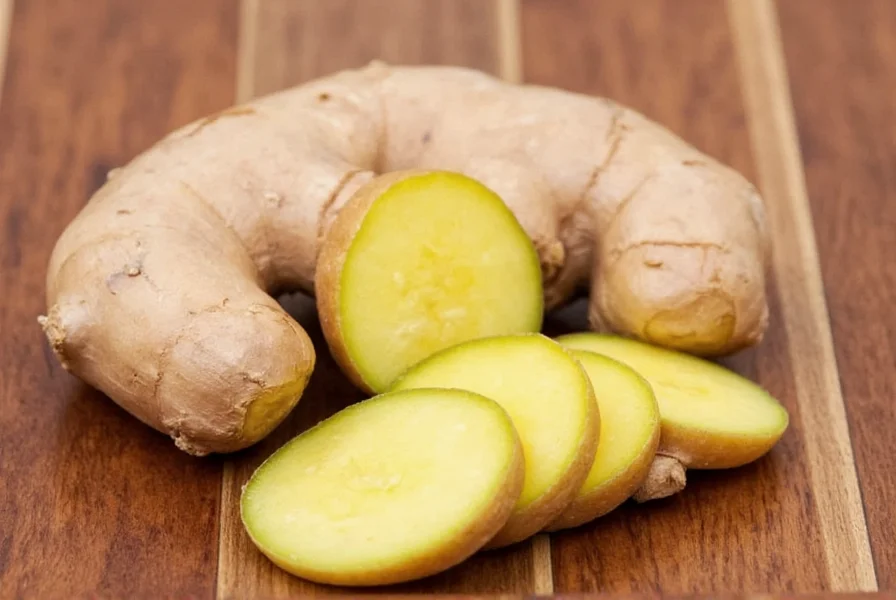Aromatic ginger varieties stand apart from common ginger through their distinctive scent compounds and flavor complexity. The heightened aromatic properties come from specific terpenes and aldehydes that create a more nuanced sensory experience. Chefs and home cooks seeking to elevate dishes with ginger's signature warmth while adding sophisticated fragrance notes often select these specialized varieties.
What Makes Ginger Aromatic: The Science Behind the Scent
The distinctive aroma of aromatic ginger stems from its unique chemical composition. While all ginger contains zingiberene (the primary compound responsible for ginger's characteristic scent), aromatic varieties contain elevated levels of additional volatile compounds:
| Compound | Concentration in Aromatic Ginger | Sensory Profile |
|---|---|---|
| Zingiberene | 35-45% | Woody, spicy base note |
| Bisabolene | 15-25% | Floral, citrus undertones |
| Citral | 8-15% | Lemon-like freshness |
| Camphene | 5-10% | Cooling, medicinal note |
These chemical differences explain why aromatic ginger varieties produce a more complex fragrance profile when grated or sliced. The higher citral content particularly contributes to the bright, citrus-forward aroma that distinguishes these varieties from standard ginger.

Different Ginger Varieties and Their Aromatic Profiles
Not all ginger is created equal when it comes to aromatic qualities. Understanding the differences between varieties helps cooks select the right type for specific applications:
- Thai Aromatic Ginger - Features a bright yellow hue and exceptionally high citral content, producing pronounced lemon notes. Ideal for curries and seafood dishes where a bright, fresh ginger aroma is desired.
- Indian Cochin Ginger - Contains balanced levels of zingiberene and bisabolene, creating a warm, floral aroma with subtle pine notes. Preferred for traditional Indian spice blends and medicinal preparations.
- African Blue Ring Ginger - Recognizable by its blue-purple ring when cut, this variety offers a complex aroma with eucalyptus and mint undertones alongside traditional ginger warmth.
- Standard Grocery Store Ginger - Typically contains lower concentrations of volatile oils, resulting in a more one-dimensional spicy warmth without pronounced citrus or floral notes.
Culinary Applications of Aromatic Ginger
Chefs leverage aromatic ginger's distinctive properties in specific culinary contexts where fragrance plays a critical role in the dining experience. Understanding when to use aromatic versus standard ginger can transform dishes:
For raw applications like salads, ceviche, or fresh sauces, aromatic ginger varieties shine because their volatile compounds remain intact. The bright citrus notes complement raw ingredients without overwhelming them. In contrast, standard ginger can taste harsh and one-dimensionally spicy when used raw.
When cooking delicate dishes like seafood broths, light soups, or vegetable stir-fries, aromatic ginger infuses the dish with complex fragrance without dominating other flavors. The higher volatile oil content means you often need less quantity to achieve the desired aromatic effect.
For baking and desserts, aromatic ginger varieties create more nuanced flavor profiles in ginger cookies, cakes, and preserves. The citrus and floral notes complement sweet ingredients better than standard ginger's purely spicy warmth.

Health Benefits of Aromatic Ginger Varieties
While all ginger varieties offer health benefits, research suggests aromatic ginger's unique compound profile may provide additional advantages. Studies examining ginger varieties with elevated citral content (common in aromatic types) show promising results:
- Enhanced anti-inflammatory effects - The combination of zingiberene and citral appears to work synergistically to reduce inflammation markers more effectively than standard ginger in preliminary studies.
- Digestive support - Aromatic ginger varieties may provide more comprehensive digestive benefits due to their broader spectrum of volatile compounds, which can help with nausea, bloating, and indigestion.
- Antimicrobial properties - Research indicates that the higher citral content in aromatic ginger demonstrates stronger activity against certain foodborne pathogens compared to standard ginger varieties.
It's important to note that while these findings are promising, most research hasn't specifically isolated aromatic ginger varieties. The health benefits of ginger generally apply across varieties, with potential enhancements from the unique compound profiles found in aromatic types.
Selecting and Storing Aromatic Ginger
Choosing quality aromatic ginger requires attention to specific characteristics that distinguish it from standard varieties:
- Visual inspection - Look for plump, firm roots with smooth skin. Aromatic varieties often have a slightly paler yellow flesh compared to standard ginger's deeper yellow.
- Scent test - The most reliable indicator. Gently scratch the skin with your fingernail; aromatic ginger should release an immediately noticeable citrusy, floral fragrance.
- Texture - Aromatic ginger typically has a slightly more fibrous texture than standard varieties, which contributes to its complex flavor release.
For optimal storage, keep aromatic ginger in a paper bag in the vegetable crisper drawer of your refrigerator. Properly stored, it maintains peak aromatic properties for 2-3 weeks. Freezing preserves the ginger longer but diminishes some volatile compounds responsible for the distinctive aroma.
Incorporating Aromatic Ginger into Your Cooking
Maximizing aromatic ginger's unique properties requires understanding how to use it effectively in different cooking methods:
- Raw applications - Use a microplane to create ultra-fine shreds that distribute evenly through dishes. The delicate citrus notes shine in salad dressings, fruit salads, and seafood crudo.
- Infusions - Create aromatic ginger simple syrup by simmering thinly sliced ginger in equal parts water and sugar for 15 minutes. Perfect for cocktails and desserts where the fragrance matters as much as flavor.
- Stir-frying - Add aromatic ginger early in the cooking process to allow volatile compounds to infuse the oil, creating a fragrant base for the entire dish.
- Tea preparation - For the most aromatic ginger tea, crush fresh ginger rather than slicing it. This releases more volatile oils while preserving the delicate fragrance compounds.
Understanding Aromatic Ginger in Global Cuisines
Culinary traditions worldwide have developed specific uses for aromatic ginger varieties based on their unique properties:
- Thai cuisine - Uses young aromatic ginger in soups like Tom Kha Gai, where the citrus notes complement coconut milk and lemongrass.
- Indian cooking - Incorporates aromatic ginger in delicate vegetable preparations and yogurt-based sauces where standard ginger would overpower other flavors.
- Japanese cuisine - Features aromatic ginger in ponzu sauce and as a garnish for delicate fish dishes, leveraging its bright fragrance without excessive heat.
- Caribbean cooking - Uses aromatic ginger varieties in jerk seasoning blends and fruit chutneys where the citrus notes enhance tropical flavors.
Understanding these traditional applications provides valuable insight into how to best utilize aromatic ginger in contemporary cooking. The key principle across cultures is using aromatic ginger when fragrance plays as important a role as flavor in the final dish.
Frequently Asked Questions
What makes ginger aromatic compared to regular ginger?
Aromatic ginger varieties contain higher concentrations of volatile compounds like citral and bisabolene (8-15% and 15-25% respectively) compared to standard ginger. These compounds create distinctive citrus and floral notes that complement the traditional spicy warmth of ginger, resulting in a more complex fragrance profile.
Can I substitute regular ginger for aromatic ginger in recipes?
You can substitute regular ginger, but the flavor profile will differ significantly. For raw applications or delicate dishes, use 25-30% less regular ginger to avoid overwhelming other flavors. For cooked dishes, consider adding a small amount of lemon zest to compensate for the missing citrus notes found in aromatic varieties.
How can I tell if ginger is truly aromatic when shopping?
To identify aromatic ginger, gently scratch the skin with your fingernail and smell the exposed area. True aromatic varieties will immediately release a noticeable citrusy, floral fragrance. Visually, they often have slightly paler yellow flesh compared to standard ginger. Some specialty markets may specifically label varieties like Thai aromatic or Cochin ginger.
Are there specific health benefits to aromatic ginger varieties?
Research suggests aromatic ginger varieties with higher citral content may offer enhanced anti-inflammatory effects due to synergistic interactions between compounds. They also demonstrate stronger antimicrobial properties against certain foodborne pathogens. However, most health benefits associated with ginger apply across varieties, with potential subtle enhancements from the unique compound profiles in aromatic types.
When should I use aromatic ginger instead of regular ginger?
Choose aromatic ginger for raw applications (salads, ceviche), delicate dishes (seafood, light soups), baking, and any preparation where fragrance is as important as flavor. Use regular ginger when you want a more straightforward spicy warmth without citrus or floral notes, such as in robust stews or when making traditional ginger tea for medicinal purposes.











 浙公网安备
33010002000092号
浙公网安备
33010002000092号 浙B2-20120091-4
浙B2-20120091-4